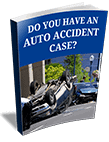Why Car Seats Are Important
If you are involved in a truck or car accident, this article shares some great advice from Phoenix car accident attorney, Aaron Crane from Cantor Crane, as to why car seats are imperative for little children. With more and more vehicles on the road each year, there has been an increase in the number of car accidents involving children. This sad reality brings car seat safety to the forefront of awareness. Although accidents are bound to happen, there are numerous measures that parents and other caregivers can take to ensure that their child is safe on the road. According to research studies, children who are not secured in a correctly installed car seat are over 5 times more likely to be fatally injured in a accident, making car seats a necessity.
It was not long ago that car seats and seat belts were not required to be worn. Now, laws are in place to protect children and other vehicle occupants from being seriously injured in automobile accidents. Using a car seat is the best way to keep your child safe when traveling in a car. There are numerous factors to be aware of when selecting a car seat as they vary based on your child’s age and size. Furthermore, proper installation is absolutely vital to ensure that a car seat provides the best protection possible.
Choosing the Correct Car Seat
When you are shopping for a car seat, there are four important questions to ask before making your selection. What type of car seat are you buying, where are you putting it, how old is your child, and how much does your child weigh? This encompasses the three stages of child safety card seats.
Stage One: Newborns and infants, who range in age from a few months up to 18 months, should be placed in rear-facing car seats. This classification of car seats face the back of the car and can handle babies weighing 13kg. The purpose of placing small infants in rear-facing car seats is due to their lack of neck strength that is necessary when dealing with the forward momentum of a vehicle coming to a stop.
Stage Two: The second stage encompasses children ranging in age from nine months to twelve months, although weight is the primary determining factor for this stage selection. The car seats in this category supports infants and toddlers weighing between 9kg and 36kg. During this stage, child safety seats are switched to face forward in the vehicle as neck strength should be soundly developed.
Stage Three: The third stage is for children between four years and twelve years of age and weighing between 18kg and 36kg. This is the last car seat phase and is often paired with the use of a vehicle’s seatbelt to provide further protection.
Proper Installation
The National Highway and Traffic Safety Administration reports that over 80 percent of child safety restraints are used incorrectly. Manuals provided during the purchase of a car seat give specific directions on how to properly install car seats and to use them. Furthermore, if a manual is not provided, they are available online. Children who ride in an improperly secured car seat are at a greater risk of injury or death. Universal car seat installation instructions are not possible as there are many different types of car seats as well as many different types of cars. You should familiarize yourself with the types of car seats as well as your vehicle’s manual to ensure proper installation.
Types of car seats include:
- Convertible
- All-in-one
- Infant
- Combination
- Backless
- High-back
If you do not feel comfortable installing a car seat yourself, ask for help from someone who is. Alternatively, many local police stations will install car seats in your vehicle for free as part of a safety initiative to reduce the number of injuries and fatalities caused by improper installation and use. If you choose to complete the task yourself, carefully follow the specific instructions which apply both to the car seat type and your make and model of car. If you have questions regarding the installation of the seat, you should call your seat’s manufacturer.
Car seat safety is becoming a worrying trend due to the increase in accidents involving children every year. While laws have required the mandatory implementation of car seat usage, if they are not installed and used properly, it can be just as detrimental as not using one at all. If you ever have any doubt, contact your car seat’s manufacturer.

